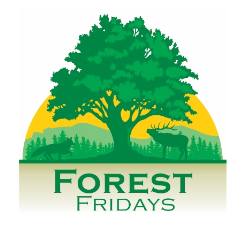Spring is around the corner… time to jump in the (vernal) pool!
By Greg Podniesinski, Forest Fridays
As days begin to lengthen and thoughts turn to spring, one of the earliest signs of the forest reawakening are the sights and sounds around vernal pools. Vernal pools appear as small dry depressions and damp spots in the forest in August and September, but slowly fill with fall rains and winter snow, setting the stage in late winter and early spring for an often raucous “pool party.”
Photo: Marbled Salamander. Credit to Jack Ray.
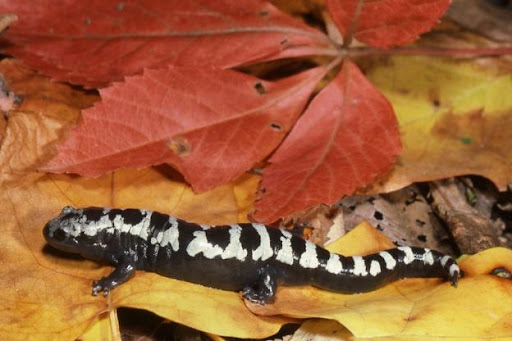
Like a teenager waiting in line for tickets to a concert, the marbled salamander (Ambystoma opacum) actually arrives at vernal pools in the fall, often before the pools begin to refill with rainwater. This gives their larvae a head start to grow over the winter before the other amphibians move to pools in late winter. It also means they are large enough to eat the newly hatched larvae of other salamanders and frogs, as well as vernal pool invertebrates.
Photo: Marbled Salamander female guarding her clutch of eggs in the dry pool basin. Credit to Jack Ray.
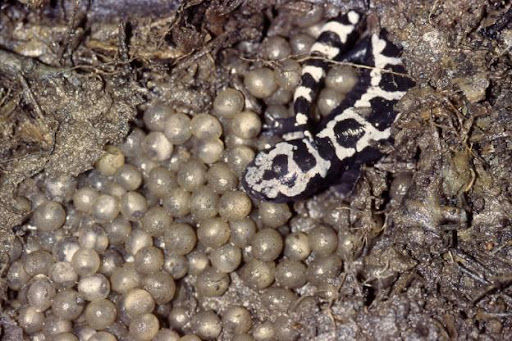
In late winter, a relatively “warm” rainy night (temperatures above 40 F° or so) can trigger the first round of salamander migrations, starting with the Jefferson salamander. It’s not uncommon to find Jefferson salamanders crawling over snow, ice and frozen ground toward the nearest vernal pool.
Photo: Jefferson Salamander migrating to a vernal pool in late winter over ice and snow. Credit to Charlie Eichelberger.
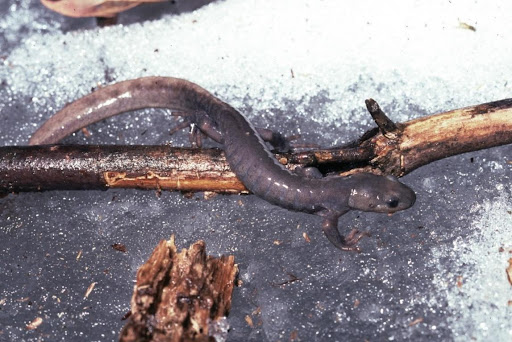
Over the next several weeks they will be followed by waves of migrating amphibians, including spotted salamanders, spring peepers, wood frogs, gray tree frogs, western chorus frogs, cricket frogs, pickerel frogs, northern leopard frogs, green frogs, spade foot toads, American toads and even bullfrogs!
A large vernal pool may become the temporary home to thousands of breeding salamanders and frogs for several weeks, with the resulting din of calling frogs and toads almost deafening.
Watch (and listen to) this video of a very loud “chorus” from a NY vernal pool:
By late April, the only sign of the wild party is hundreds of egg masses, quietly developing and getting ready to hatch out.
Photo: Spotted salamander. Credit to Charlie Eichelberger.
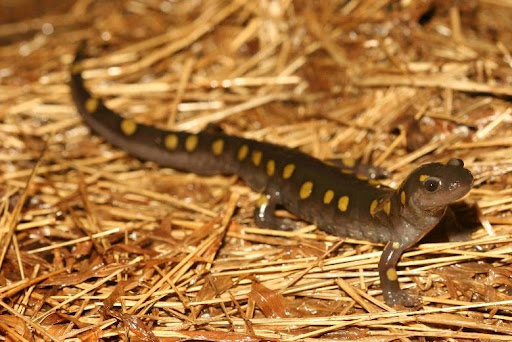
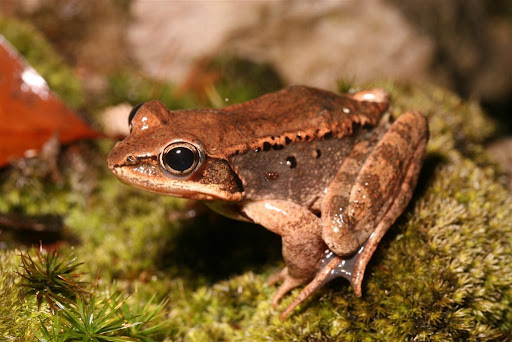
Above left photo: Spotted salamander egg mass. Credit to Charlie Eichelberger.
Above right photo: Raft of wood frog egg masses. Credit to Sally Ray.
Above middle photo: Wood frog. Credit to Charlie Eichelberger.
Above left photo: Calling male gray tree frog. Credit to Jack Ray.
Above right photo: Calling male spring peeper. Credit to Charlie Eichelberger.
Once the party is over, the adult salamanders and frogs will melt back into the surrounding forests, though most don’t move more that a few hundred yards from the vernal pools they were born in. This makes the management and protection of the uplands around these pools just as important as the pools themselves.
If you can get out in the woods the next couple of weeks, head out to a nearby vernal pool and look and listen to Nature’s “rock concert” while the spring party is in full swing!
Photo: Large vernal pool surrounded by forest. Credit to Betsy Ray.
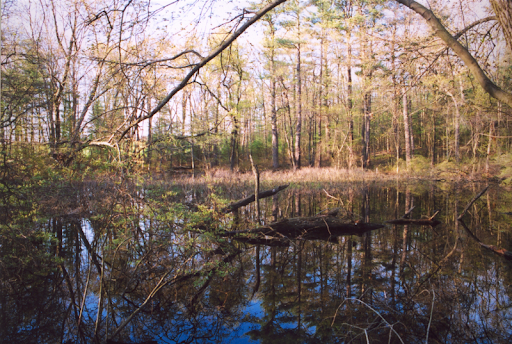
For more on vernal pool animals, ecology, conservation and education, go the Pennsylvania Natural Heritage Programs Vernal Pool page.
About the Author:
Greg Podniesinski is chief of the Natural Heritage Section of the PA Department of Conservation and Natural Resources – Bureau of Forestry, as well as State Director of the PA Natural Heritage Program. Podniesinski has worked for the Bureau for the last six years, and a total of 10 years with DCNR. He has also spent 20 years working with the PA Natural Heritage Program. Podniesinski earned his B.S. in Biology from the University of Notre Dame, his M.S. in Zoology from the University Of Maine and his Ph.D. in Environmental Science from the SUNY College of Environmental Science and Forestry at Syracuse. He has a particular interest in plant community ecology, floodplains, fens, bogs, shale and serpentine barrens, and is especially fond of native orchids and serpentine barren plants. Learn more about DCNR here.
